2.28: Reproduction
- Page ID
- 8927
\( \newcommand{\vecs}[1]{\overset { \scriptstyle \rightharpoonup} {\mathbf{#1}} } \)
\( \newcommand{\vecd}[1]{\overset{-\!-\!\rightharpoonup}{\vphantom{a}\smash {#1}}} \)
\( \newcommand{\dsum}{\displaystyle\sum\limits} \)
\( \newcommand{\dint}{\displaystyle\int\limits} \)
\( \newcommand{\dlim}{\displaystyle\lim\limits} \)
\( \newcommand{\id}{\mathrm{id}}\) \( \newcommand{\Span}{\mathrm{span}}\)
( \newcommand{\kernel}{\mathrm{null}\,}\) \( \newcommand{\range}{\mathrm{range}\,}\)
\( \newcommand{\RealPart}{\mathrm{Re}}\) \( \newcommand{\ImaginaryPart}{\mathrm{Im}}\)
\( \newcommand{\Argument}{\mathrm{Arg}}\) \( \newcommand{\norm}[1]{\| #1 \|}\)
\( \newcommand{\inner}[2]{\langle #1, #2 \rangle}\)
\( \newcommand{\Span}{\mathrm{span}}\)
\( \newcommand{\id}{\mathrm{id}}\)
\( \newcommand{\Span}{\mathrm{span}}\)
\( \newcommand{\kernel}{\mathrm{null}\,}\)
\( \newcommand{\range}{\mathrm{range}\,}\)
\( \newcommand{\RealPart}{\mathrm{Re}}\)
\( \newcommand{\ImaginaryPart}{\mathrm{Im}}\)
\( \newcommand{\Argument}{\mathrm{Arg}}\)
\( \newcommand{\norm}[1]{\| #1 \|}\)
\( \newcommand{\inner}[2]{\langle #1, #2 \rangle}\)
\( \newcommand{\Span}{\mathrm{span}}\) \( \newcommand{\AA}{\unicode[.8,0]{x212B}}\)
\( \newcommand{\vectorA}[1]{\vec{#1}} % arrow\)
\( \newcommand{\vectorAt}[1]{\vec{\text{#1}}} % arrow\)
\( \newcommand{\vectorB}[1]{\overset { \scriptstyle \rightharpoonup} {\mathbf{#1}} } \)
\( \newcommand{\vectorC}[1]{\textbf{#1}} \)
\( \newcommand{\vectorD}[1]{\overrightarrow{#1}} \)
\( \newcommand{\vectorDt}[1]{\overrightarrow{\text{#1}}} \)
\( \newcommand{\vectE}[1]{\overset{-\!-\!\rightharpoonup}{\vphantom{a}\smash{\mathbf {#1}}}} \)
\( \newcommand{\vecs}[1]{\overset { \scriptstyle \rightharpoonup} {\mathbf{#1}} } \)
\( \newcommand{\vecd}[1]{\overset{-\!-\!\rightharpoonup}{\vphantom{a}\smash {#1}}} \)
\(\newcommand{\avec}{\mathbf a}\) \(\newcommand{\bvec}{\mathbf b}\) \(\newcommand{\cvec}{\mathbf c}\) \(\newcommand{\dvec}{\mathbf d}\) \(\newcommand{\dtil}{\widetilde{\mathbf d}}\) \(\newcommand{\evec}{\mathbf e}\) \(\newcommand{\fvec}{\mathbf f}\) \(\newcommand{\nvec}{\mathbf n}\) \(\newcommand{\pvec}{\mathbf p}\) \(\newcommand{\qvec}{\mathbf q}\) \(\newcommand{\svec}{\mathbf s}\) \(\newcommand{\tvec}{\mathbf t}\) \(\newcommand{\uvec}{\mathbf u}\) \(\newcommand{\vvec}{\mathbf v}\) \(\newcommand{\wvec}{\mathbf w}\) \(\newcommand{\xvec}{\mathbf x}\) \(\newcommand{\yvec}{\mathbf y}\) \(\newcommand{\zvec}{\mathbf z}\) \(\newcommand{\rvec}{\mathbf r}\) \(\newcommand{\mvec}{\mathbf m}\) \(\newcommand{\zerovec}{\mathbf 0}\) \(\newcommand{\onevec}{\mathbf 1}\) \(\newcommand{\real}{\mathbb R}\) \(\newcommand{\twovec}[2]{\left[\begin{array}{r}#1 \\ #2 \end{array}\right]}\) \(\newcommand{\ctwovec}[2]{\left[\begin{array}{c}#1 \\ #2 \end{array}\right]}\) \(\newcommand{\threevec}[3]{\left[\begin{array}{r}#1 \\ #2 \\ #3 \end{array}\right]}\) \(\newcommand{\cthreevec}[3]{\left[\begin{array}{c}#1 \\ #2 \\ #3 \end{array}\right]}\) \(\newcommand{\fourvec}[4]{\left[\begin{array}{r}#1 \\ #2 \\ #3 \\ #4 \end{array}\right]}\) \(\newcommand{\cfourvec}[4]{\left[\begin{array}{c}#1 \\ #2 \\ #3 \\ #4 \end{array}\right]}\) \(\newcommand{\fivevec}[5]{\left[\begin{array}{r}#1 \\ #2 \\ #3 \\ #4 \\ #5 \\ \end{array}\right]}\) \(\newcommand{\cfivevec}[5]{\left[\begin{array}{c}#1 \\ #2 \\ #3 \\ #4 \\ #5 \\ \end{array}\right]}\) \(\newcommand{\mattwo}[4]{\left[\begin{array}{rr}#1 \amp #2 \\ #3 \amp #4 \\ \end{array}\right]}\) \(\newcommand{\laspan}[1]{\text{Span}\{#1\}}\) \(\newcommand{\bcal}{\cal B}\) \(\newcommand{\ccal}{\cal C}\) \(\newcommand{\scal}{\cal S}\) \(\newcommand{\wcal}{\cal W}\) \(\newcommand{\ecal}{\cal E}\) \(\newcommand{\coords}[2]{\left\{#1\right\}_{#2}}\) \(\newcommand{\gray}[1]{\color{gray}{#1}}\) \(\newcommand{\lgray}[1]{\color{lightgray}{#1}}\) \(\newcommand{\rank}{\operatorname{rank}}\) \(\newcommand{\row}{\text{Row}}\) \(\newcommand{\col}{\text{Col}}\) \(\renewcommand{\row}{\text{Row}}\) \(\newcommand{\nul}{\text{Nul}}\) \(\newcommand{\var}{\text{Var}}\) \(\newcommand{\corr}{\text{corr}}\) \(\newcommand{\len}[1]{\left|#1\right|}\) \(\newcommand{\bbar}{\overline{\bvec}}\) \(\newcommand{\bhat}{\widehat{\bvec}}\) \(\newcommand{\bperp}{\bvec^\perp}\) \(\newcommand{\xhat}{\widehat{\xvec}}\) \(\newcommand{\vhat}{\widehat{\vvec}}\) \(\newcommand{\uhat}{\widehat{\uvec}}\) \(\newcommand{\what}{\widehat{\wvec}}\) \(\newcommand{\Sighat}{\widehat{\Sigma}}\) \(\newcommand{\lt}{<}\) \(\newcommand{\gt}{>}\) \(\newcommand{\amp}{&}\) \(\definecolor{fillinmathshade}{gray}{0.9}\)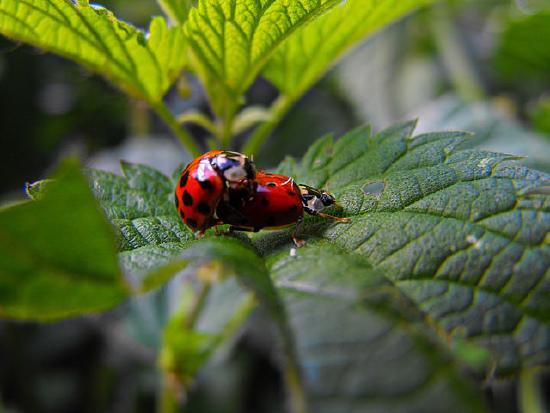
One parent or two?
That is the main difference between sexual and asexual reproduction. Sexual reproduction just means combining genetic material from two parents. Asexual reproduction produces offspring genetically identical to the one parent.
Reproduction: Asexual vs. Sexual
Cell division is how organisms grow and repair themselves. It is also how many organisms produce offspring. For many single-celled organisms, reproduction is a similar process. The parent cell simply divides to form two daughter cells that are identical to the parent. In many other organisms, two parents are involved, and the offspring are not identical to the parents. In fact, each offspring is unique. Look at the family in Figure below. The children resemble their parents, but they are not identical to them. Instead, each has a unique combination of characteristics inherited from both parents.
 Family Portrait: Mother, Daughter, Father, and Son. Children resemble their parents, but they are never identical to them. Do you know why this is the case?
Family Portrait: Mother, Daughter, Father, and Son. Children resemble their parents, but they are never identical to them. Do you know why this is the case?Reproduction is the process by which organisms give rise to offspring. It is one of the defining characteristics of living things. There are two basic types of reproduction: asexual reproduction and sexual reproduction.
Asexual Reproduction
Asexual reproduction involves a single parent. It results in offspring that are genetically identical to each other and to the parent. All prokaryotes and some eukaryotes reproduce this way. There are several different methods of asexual reproduction. They include binary fission, fragmentation, and budding.
- Binary fission occurs when a parent cell splits into two identical daughter cells of the same size.
- Fragmentation occurs when a parent organism breaks into fragments, or pieces, and each fragment develops into a new organism. Starfish, like the one in Figure below, reproduce this way. A new starfish can develop from a single ray, or arm. Starfish, however, are also capable of sexual reproduction.
- Budding occurs when a parent cell forms a bubble-like bud. The bud stays attached to the parent cell while it grows and develops. When the bud is fully developed, it breaks away from the parent cell and forms a new organism. Budding in yeast is shown in Figure below.
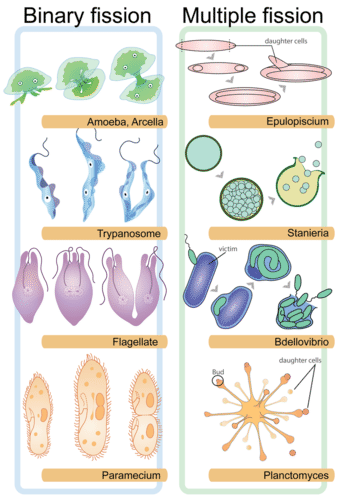 Binary Fission in various single-celled organisms (left). Cell division is a relatively simple process in many single-celled organisms. Eventually the parent cell will pinch apart to form two identical daughter cells. In multiple fission (right), a multinucleated cell can divide to form more than one daughter cell. Multiple fission is more often observed among protists.
Binary Fission in various single-celled organisms (left). Cell division is a relatively simple process in many single-celled organisms. Eventually the parent cell will pinch apart to form two identical daughter cells. In multiple fission (right), a multinucleated cell can divide to form more than one daughter cell. Multiple fission is more often observed among protists.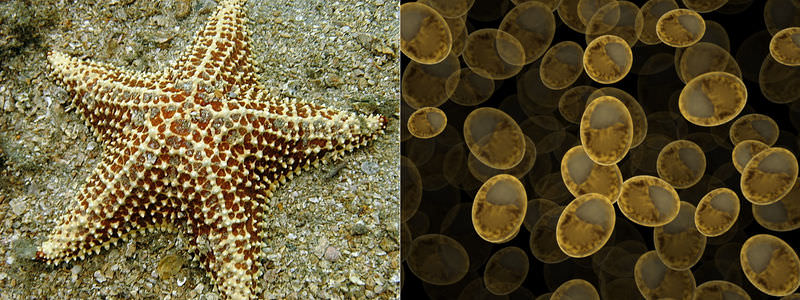 Starfish reproduce by fragmentation and yeasts reproduce by budding. Both are types of asexual reproduction.
Starfish reproduce by fragmentation and yeasts reproduce by budding. Both are types of asexual reproduction.Asexual reproduction can be very rapid. This is an advantage for many organisms. It allows them to crowd out other organisms that reproduce more slowly. Bacteria, for example, may divide several times per hour. Under ideal conditions, 100 bacteria can divide to produce millions of bacterial cells in just a few hours! However, most bacteria do not live under ideal conditions. If they did, the entire surface of the planet would soon be covered with them. Instead, their reproduction is kept in check by limited resources, predators, and their own wastes. This is true of most other organisms as well.
Sexual Reproduction
Sexual reproduction involves two parents. As you can see from Figure below, in sexual reproduction, parents produce reproductive cells—called gametes—that unite to form an offspring. Gametes are haploid cells. This means they contain only half the number of chromosomes found in other cells of the organism. Gametes are produced by a type of cell division called meiosis, which is described in detail in a subsequent concept. The process in which two gametes unite is called fertilization. The fertilized cell that results is referred to as a zygote. A zygote is diploid cell, which means that it has twice the number of chromosomes as a gamete.
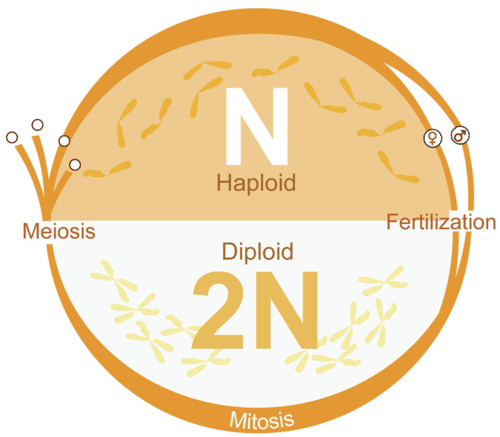 Cycle of Sexual Reproduction. Sexual reproduction involves the production of haploid gametes by meiosis. This is followed by fertilization and the formation of a diploid zygote. The number of chromosomes in a gamete is represented by the letter n. Why does the zygote have 2n, or twice as many, chromosomes?
Cycle of Sexual Reproduction. Sexual reproduction involves the production of haploid gametes by meiosis. This is followed by fertilization and the formation of a diploid zygote. The number of chromosomes in a gamete is represented by the letter n. Why does the zygote have 2n, or twice as many, chromosomes?Summary
- Asexual reproduction involves one parent and produces offspring that are genetically identical to each other and to the parent.
- Sexual reproduction involves two parents and produces offspring that are genetically unique.
- During sexual reproduction, two haploid gametes join in the process of fertilization to produce a diploid zygote.
- Meiosis is the type of cell division that produces gametes.
Review
- What are three types of asexual reproduction?
- Define gamete and zygote. What number of chromosomes does each have (in humans)?
- What happens during fertilization?
- Compare and contrast asexual and sexual reproduction.
| Image | Reference | Attributions |
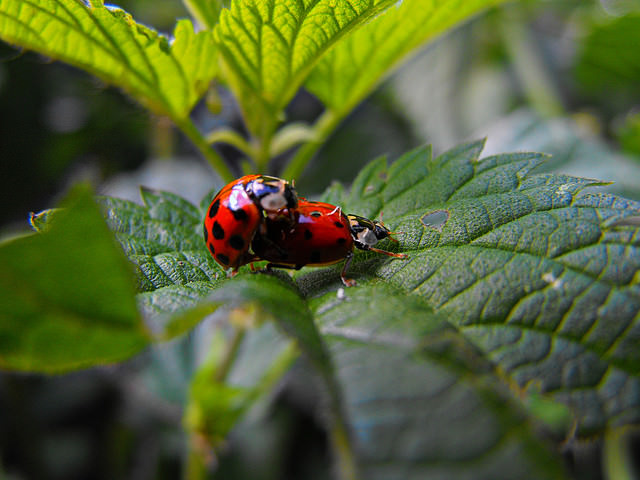 |
[Figure 1] | Credit: Mariana Ruiz Villarreal (LadyofHats) for CK-12 Foundation;Starfish: Flickr:amanderson2; Yeast: Zappy's Source: CK-12 Foundation ; Starfish: http://www.flickr.com/photos/amanderson/7203865052/ ; Yeast: CK-12 Foundation License: Starfish: CC BY 2.0; Yeast: CC BY-NC 3.0 |
 |
[Figure 2] | Credit: Image copyright Juan Carlos Tinjaca, 2014;Mariana Ruiz Villarreal (LadyofHats) for CK-12 Foundation;BBC Source: http://www.shutterstock.com ; CK-12 Foundation ; www.bbc.co.uk/schools/gcsebitesize/science/aqa/geneticvariation/reproductionrev1.shtml License: Used under license from Shutterstock.com |
 |
[Figure 3] | Credit: Mariana Ruiz Villarreal (LadyofHats) for CK-12 Foundation Source: CK-12 Foundation License: CC BY-NC 3.0 |
 |
[Figure 4] | Credit: Starfish: Flickr:amanderson2; Yeast: Zappy's Source: Starfish: http://www.flickr.com/photos/amanderson/7203865052/ ; Yeast: CK-12 Foundation ; http://www.flickr.com/photos/amanderson/7203865052/ ; Yeast: CK-12 Foundation License: Starfish: CC BY 2.0; Yeast: CC BY-NC 3.0 |
 |
[Figure 5] | Credit: Mariana Ruiz Villarreal (LadyofHats) for CK-12 Foundation Source: CK-12 Foundation License: CC BY-NC 3.0 |

